Says Mayor Baek Sung-hyeon, a sophisticated strategist with an excellent sense of politics, on his one-year anniversary
After defeating his opponent by an overwhelming 64.34% in the June 1 local elections, Nonsan City Mayor Baek Sung-hyun didn't hesitate to make a strong push for key projects.
In June last year, when the economic situation of small businesses in Nonsan took a turn for the worst as the prolonged COVID-19 restricted visits to the army training center, Mayor-elect Baek, who felt a sense of urgency, ran to the People's Power Party.
After meeting with Policy Committee Chairman Sung Il-jong at the ruling party, Mayor Baek explained the urgency of resuming out-of-barrack visits to the army training center, and after contacting Chief of Army Staff Park Jung-hwan and Army Training Center Director Park Won-ho, he quickly earned the decision to resume out-of-barrack visits and received a tearful welcome from the small business owners.

Mayor Baek then invited Kim Byung-jun, former chairman of the Presidential Commission on Regional Balanced Development, to his office, and said that the Nonsan National Defense Industrial Complex is being built with a goal of completion in 2027, and asked him to support President Yoon Suk-yeol's pledge to create a smart defense cluster and relocate public institutions to the regions.
Mayor Baek, who was inaugurated as the eighth mayor of Nonsan through popular election, visited the environmental beautification company Sangjae Environment. in the early morning three days after his inauguration, and shook hands with about 50 workers one by one, listening to their difficulties and encouraging them.
On this day, Mayor Baek showed his warm humanity by greeting the workers, saying that he thought it was appropriate to visit those who are striving to make Nonsan a pleasant and livable place to live even under difficult conditions.
In line with his philosophy that bipartisanship is necessary for regional development, he met with Representative Kim Jong-min of the Democratic Party and pledged to work together for the development of Nonsan.

In particular, the meeting was attended by city executives and aides of Rep. Kim, who will be in charge of the actual work, and it was an opportunity to increase the level of practical agreements by continuing detailed discussions.
With the goal of establishing Nonsan as a city for the military industry, he met with President Jung Hae-il of the National Defense University, Major General Park Won-ho of the Army Training Center, and Principal Yang Yoon-seok of the Army Aviation School, among others, to listen to the current status of the military and create a cooperative atmosphere.
Unlike most first-time leaders of organizations who falter through trial and error due to inexperience, Mayor Baek was often seen proactively contacting the heads of central government ministries with meticulous planning and bold actions.
He met with the vice minister of agriculture and livestock to discuss the development of agriculture in Nonsan, and demand a change in policy at the government level.
In the case of the southern region, including Nonsan, Gongju, Geumsan, Buyeo, and Seocheon, he explained that the region is in danger of disappearing due to a declining and aging population, and emphasized that only the creation of high-quality jobs is a factor in attracting people.
The bid to attract the Defense Acquisition Administration Program (DAPA) was a highly sophisticated strategy. Recognizing that the relocation of the DAPA to Daejeon was a pledge of President Yoon and that the city's infrastructure was relatively superior, Mayor Baek was vocal about relocating it to Nonsan. He was known to ask the politicians and the government for pragmatic support for the defense industry, thus creating an image of Nonsan as a city for the military industry.
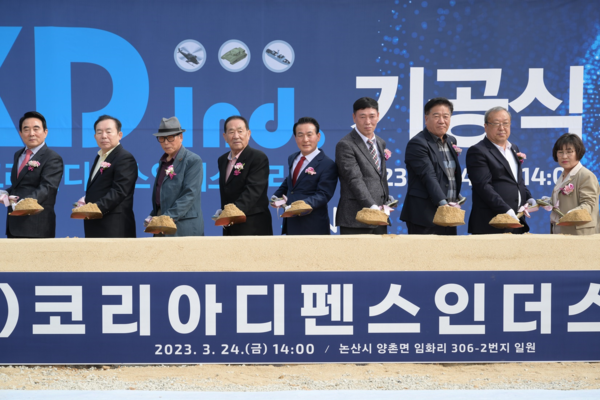
In meetings with key figures in the ruling party, including National Assembly Speaker Chung Jin-seok, Policy Committee Chairman Sung Il-jong, Representative Hong Moon-pyo, and Representative Lee Myung-soo, he has developed the logic that Nonsan should be developed into a military-industrial city as a countermeasure to the threat of the loss of the southern region.
Then, in September last year, Mayor Baek surprised citizens by showing leadership at the 8th Chungnam Mayors' Council, held at Cheonan City Hall, where he led 15 mayors and military leaders to pass a resolution to create a southern economic zone by fostering the defense industry and attracting related institutions, centered on Nonsan.
Like Huntsville, Alabama, which has been transformed into a key defense city in the U.S., Nonsan City is determined to establish itself as a mecca for the Korean arms industry. The mayor has expressed his vision to create a new value for Nonsan based on the pride of the citizens of Nonsan, who have spent 70 years with defense facilities, and abundant defense resources.
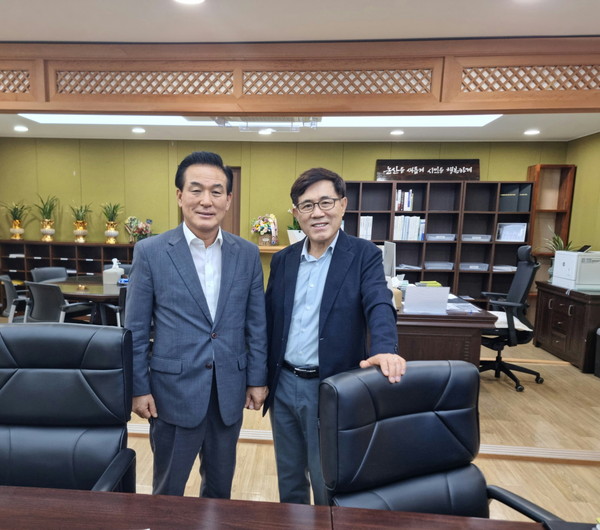
After such struggles, on September 22 last year, the city attracted a large-scale defense company, Korea Defense Industry (KDInd), and led an investment agreement worth 120 billion won, marking the beginning of the creation of the best military industry city in Korea.
KDInd is a key Korean defense company that produces and delivers weapons systems to the military, and currently produces artillery ammunition, fuses, and other defense products at its Sejong (headquarters), Daejeon (factory and research institute), and Bo-eun and Gumi factories, with plans to develop and mass-produce rocket and air defense ammunition in the future.
After signing an agreement with Nonsan City, KDInd started construction on March 23, with a goal of investing 120 billion won over the next five years on a 430,000-square-meter site in Imhwa-ri, Yangchon-myeon.
With construction currently underway, citizens are expected to look forward to Mayor Baek's sophisticated strategy to create sustainable high-quality jobs and attract people to the southern region of Chungnam, which is facing the threat of rural depopulation, and to take a big step toward becoming a mecca for the defense industry in partnership with KDInd.
Here are additional details of information concerning the Nonsan City:
History: Situated in the lower part of the central region of the Korean Peninsula, which is in the shape of a roaring tiger, Nonsan has long been regarded as the source of strength for the land and became home to early settlers in the prehistoric times.
The present-day Nonsan was part of Mahan in the Sanhan period and part of Baekje in the Three Kingdoms Period. This was where the final battle between the 5,000 troops led by General Gyebaek of Baekje and the 50,000 troops led by General Kim Yu-sin of Silla occurred, which ended in the defeat of Baekje.
During the Goryeo and Joseon dynasties, the region contained four hyeons, which were Yeonsan, Eunjin, Noseong and Seokseong. In 1912, the administrative division was changed from 4 hyeons to 4 guns, which were then merged into Nonsan-gun in 1914. Nonsan-gun was promoted to the city status on March 1, 1996, and Duma-myeon was separated and incorporated into Gyeryong-si on September 19, 2003.
Symbol Mark: The yellow color below the symbol mark signifies Hwangsanbeol, while the blue color above the symbol mark represents the sky. The letter, O, in “NONSAN,” was accentuated with an image of the sun, while the letter, “A,” depicts a mountain. The symbol mark, as a whole, shows that there is a blue sky above the vast field of Hwangsanbeol, and depicts the peaceful and beautiful environment of Nonsan, with the bright sun and the greenness. For English characters, “NONSAN,” a unique font that exudes a sense of freedom and stability was used to capture the characteristics of the residents of Nonsan.
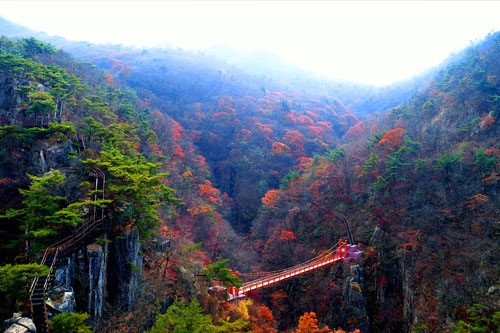
Daedunsan Mountain is called the Sogeumgang of the Honam region. The magnificent forms of the rocky cliffs are so striking that they have long been praised by poets and other writers since the past. It contains a number of sightseeing spots including Gunji Valley, Surak Falls, Macheondae, Seonnyeo Falls, Nakjodae and more.
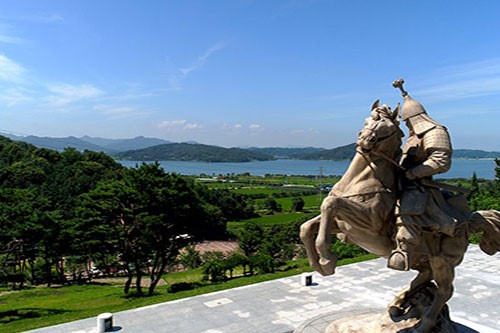
General Gyebaek Historic Site with the traces of the loyal spirit of the 5,000 death-defying troops
This site was designated as Chungcheongnam-do Monument No. 74 on December 29, 1989. This is a historic site related to General Gyebaek, regarded as one of the top three loyal subjects of Baekje along with Seongchung and Heungsu, and it is near Hwangsanbeol, which was the site of the final battle between Baekje and Silla.

Ssanggyesa Temple is located on the eastern foothills of Bulmyeongsan Mountain in Jungsan-ri, Yangchon-myeon. Daeungjeon Hall, designated as Treasure No. 408, has latticed windows in floral patterns that display exquisite sophistication.
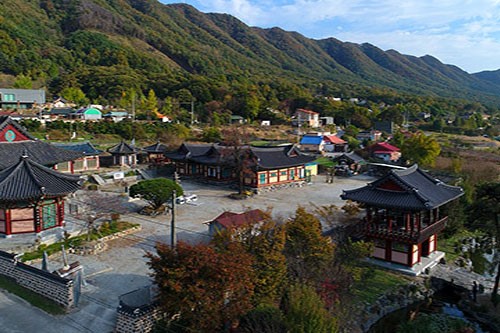
The Gaetaesa Temple was the largest guardian Buddhist temple of the Goryeo Dynasty, where senior government officials prayed for the protection of the state during the times of national hardships. The temple site contains the Maitreya Triad Statue (Treasure No. 219), a five-story stone pagoda, Gaetaesa iron pot, as well as Changungak and Ujugak halls.

Along with Pyongyang and Daegu, it is one of the three major markets in the country, and has a national reputation as the largest salted fish market in the 1930s, and the Ganggyeong Salted Fish Festival is being held nearby.
Since 2013, Ganggyeong Modern History and Culture Street has been created where history and tradition are harmonized by systematically reorganizing and restoring modern historical and cultural resources scattered around Jungang-ri and Seochang-ri, Ganggyeong-eup.

The Noseongsanseong Fortress built from the Baekje period, taking advantage of the natural terrains, is a near-perfect fortress containing a reinforcing stone wall spanning 1km in circumference. Talc was shaped into rectangular blocks to be piled in the east, west and north sides. There is a place that is speculated to have been Jangdaeji at the peak, and the ruins of what seems to be a beacon fire station are found down the eastern wall.
Myeongjae Old House is an old house with a scholarly spirit, and the winter snow scene has gained national fame.

Eungdodang was designated as a treasure during the Joseon Dynasty as a UNESCO World Heritage site, and there are Jeonghoedang, Yangseongdang, Sanangru, and Jangpangak.
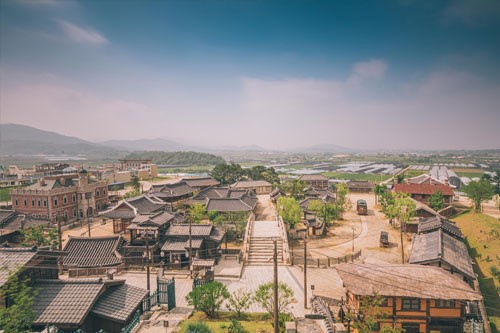
It is a complex cultural space with various experiences and viewing facilities, including Sunshine Studio and 1950 Studio. There is a military experience center using the latest VR technology and a survival experience center that you can enjoy with your whole body.
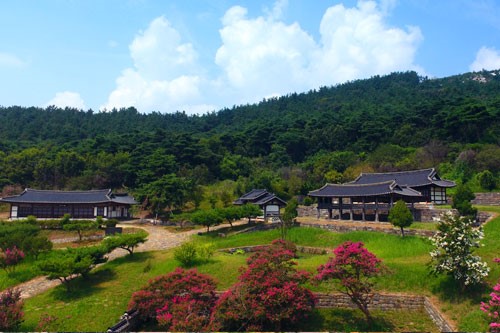
The Korea Confucian Cultural Promotion Agency is a hub for the promotion of Chungcheong national studies by helping transfer classical cultural and intangible intellectual resources such as Hyanggyo, Seowon, and old houses scattered throughout the Chungcheong region.
Nonsan is a city in South Chungcheong Province, South Korea. It is located at 36°12′N 127°5′E. The origin of Nonsan's geographical names is said to have come from the small garden " Nolmoe, " which rises in the middle of farming fields, where rice paddies and mountain are said to reflect geographical features.[1] The city belongs to the Daejeon Metropolitan Area.
History: Nonsan has a significant history. During the Samhan period, Nonsan is believed to have been part of Mahan territory. In the Baekje period, the district belonged to Hwangdeungyasan-gun. The crucial battle in which Silla defeated Baekje is thought to have taken place in the general area of Nonsan. Later, in the Silla period, Nonsan was divided into two different towns: Deogeun and Hwangsan.
The train station was built in 1911, in the same year as the rail line through the Nonsan plain was completed.[3]
The modern city of Nonsan was established in 1914, by the merger of the four counties of Yeonsan-gun, Eunjin-gun, Noseong-gun and Seoksung-gun.
During the Korean War, a POW camp was set up by the U.S. and South Korean forces. On June 18, 1953, at the Nonsan camp as well as at POW camps at Busan, Masan, and Kwangju, thousands of POWs swarmed out of the camps and melted into the local population in order to avoid being repatriated to North Korea.[4]
Nonsan is a city in South Chungcheong Province, South Korea. It is located at 36°12′N 127°5′E. The origin of Nonsan's geographical names is said to have come from the small garden " Nolmoe, " which rises in the middle of farming fields, where rice paddies and mountain are said to reflect geographical features. The city belongs to the Daejeon Metropolitan Area.
Transportation: Nonsan is served by the national railroad system and city, regional and national bus lines. An expressway connects the city to Daejeon and other cities. Many streets have bike paths, sharing pavement with sidewalks. The stream running through the city proper is not navigable, but downstream it joins the Geum River, and an outlying subdivision of the city serves as a significant fishing port.
Chungcheong Metropolitan Railroad is proposed, in the third phase, to set Ganggyeong Station for the starting point and connect the city with Gyeryong, Daejeon, and Cheongju.
Economics and industry: Nonsan is an agricultural city, with rice being the most important crop. Other important crops include strawberries, ginseng, napa cabbage, watermelons, and Korean pears. According to The Chosun Ilbo, the farmers are growing new varieties of strawberry produced in Japan without the producer's permission, while the JoongAng Daily says "Strawberries grown in Nonsan are of various types: seolhyang, maehyang, geumhyang, janghi (akihime)
The first three were developed in Nonsan while the latter two are from Japan. Janghi is the most commonly grown in Korea. However, seolhyang is the sweetest". Sesil company is the world's third leading producer of insects for natural pest control. The prominent yogurt company, Yakult, has its headquarters in Nonsan. Agro-Fisheries Trade Corp. is a regional supplier of food products.

